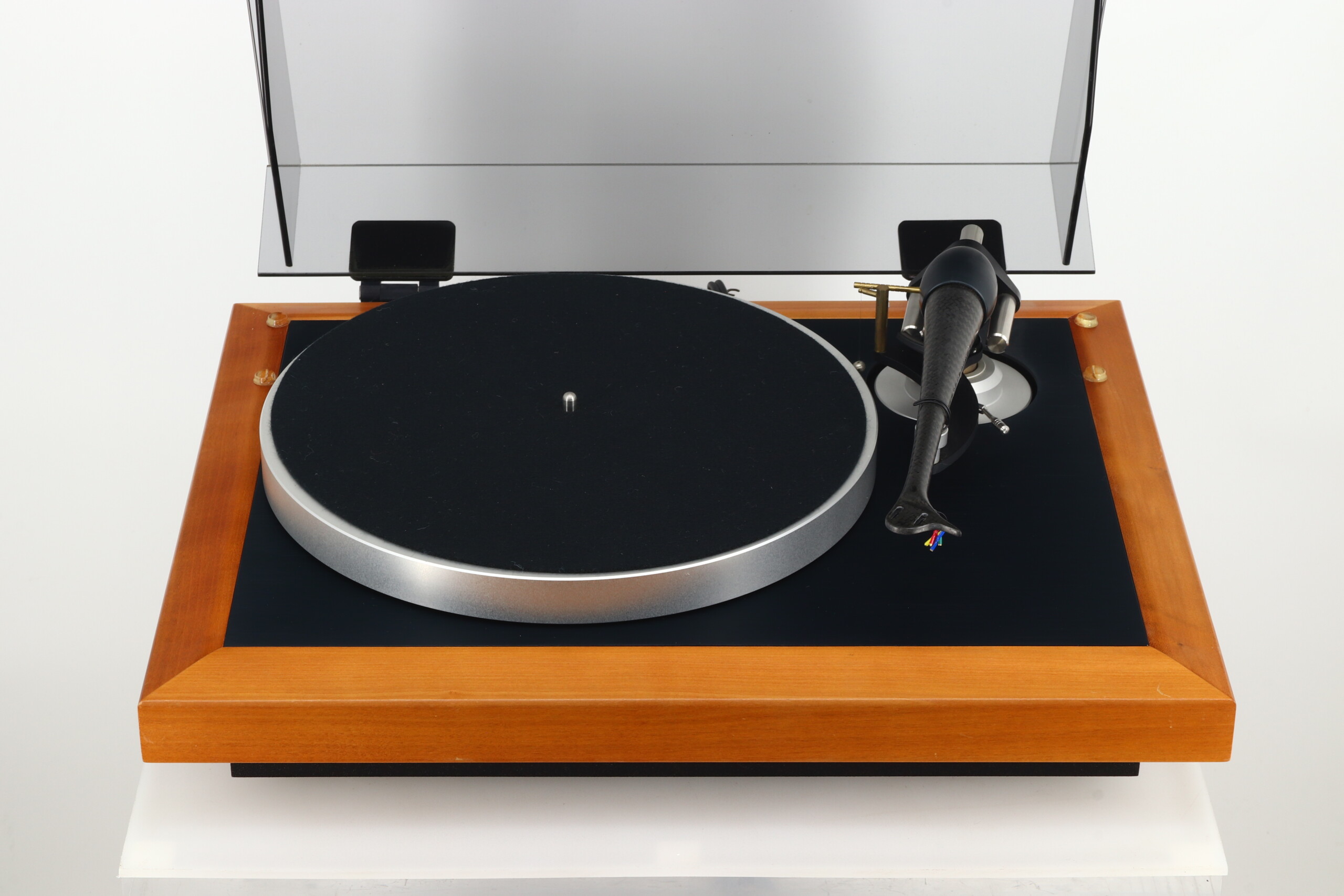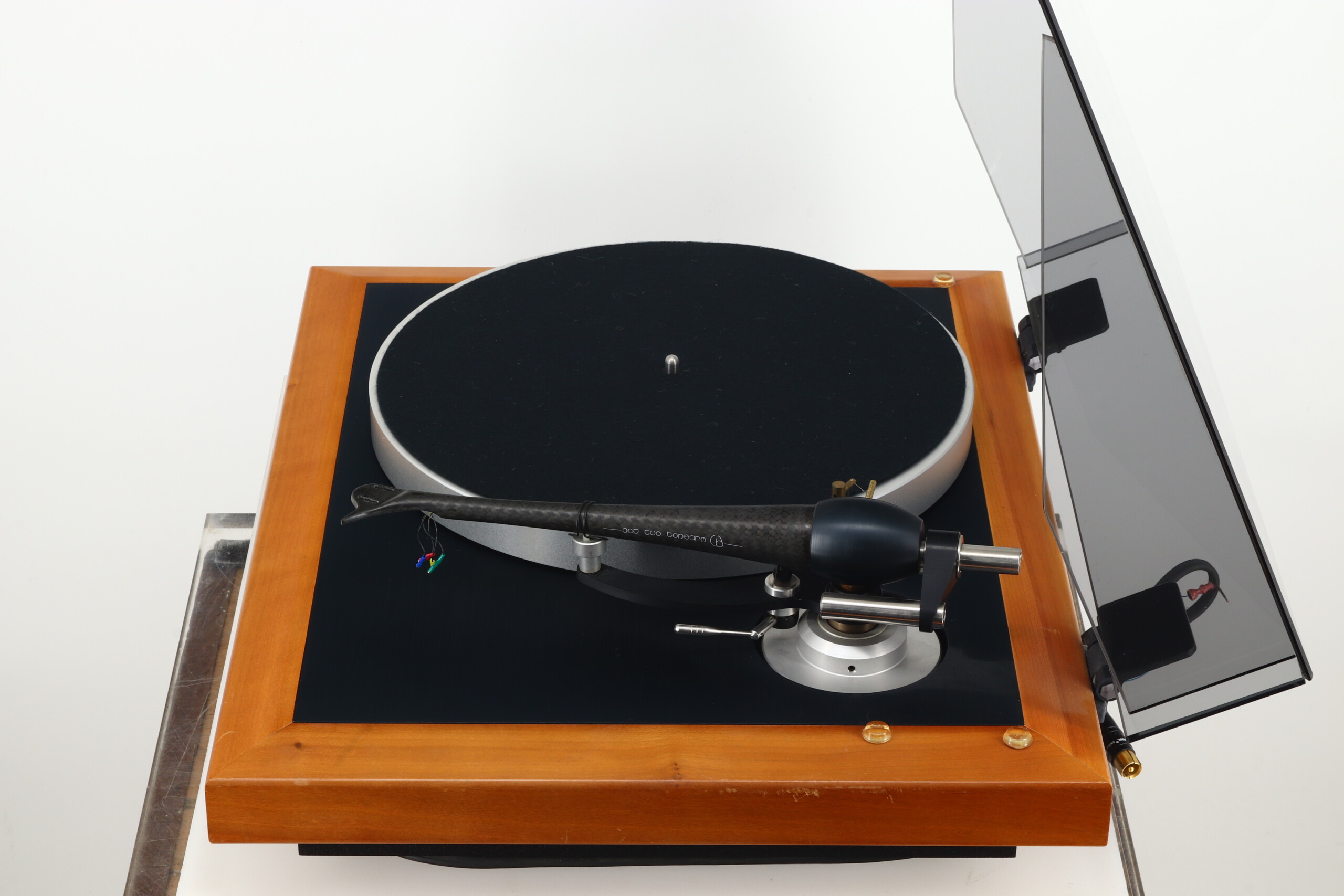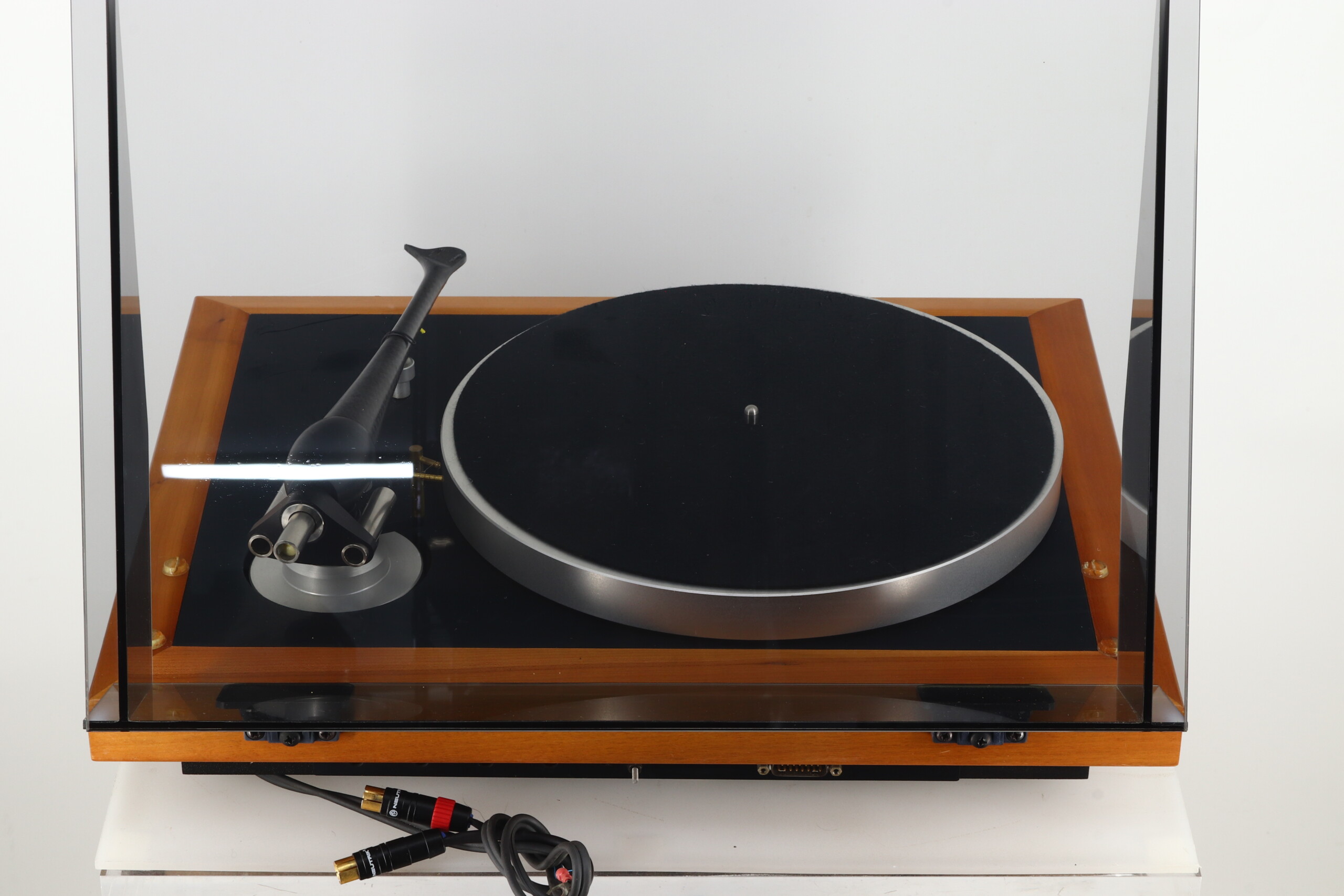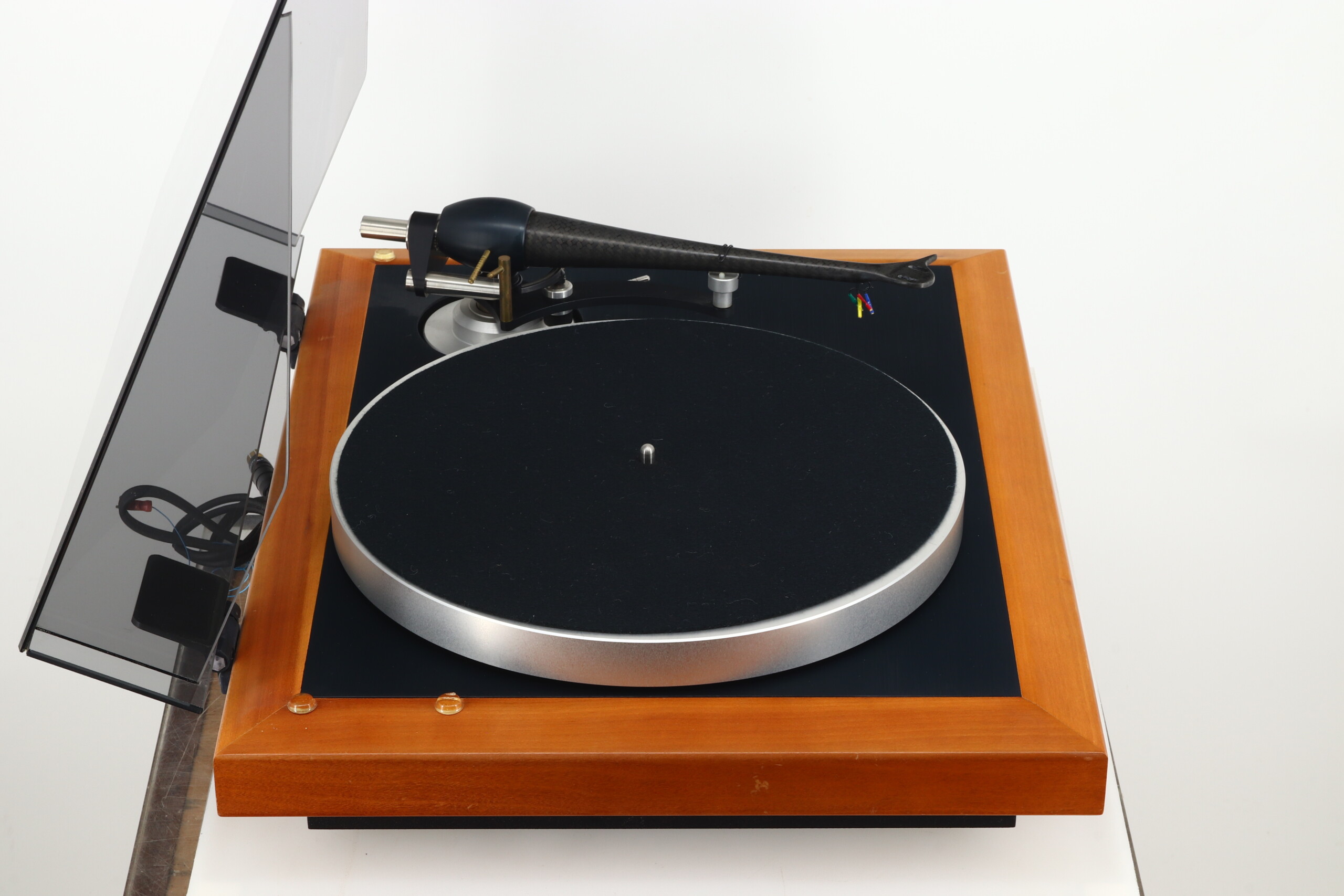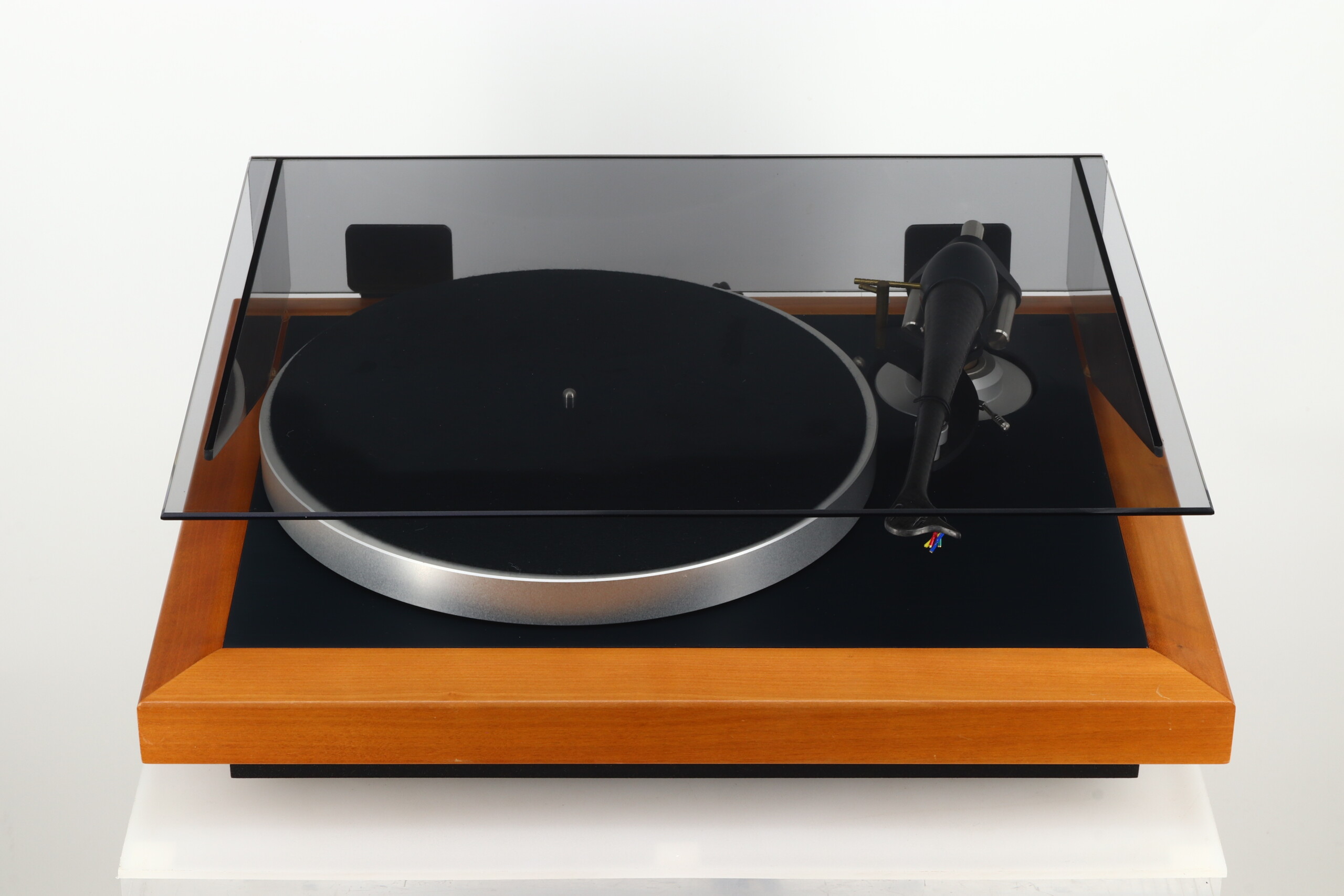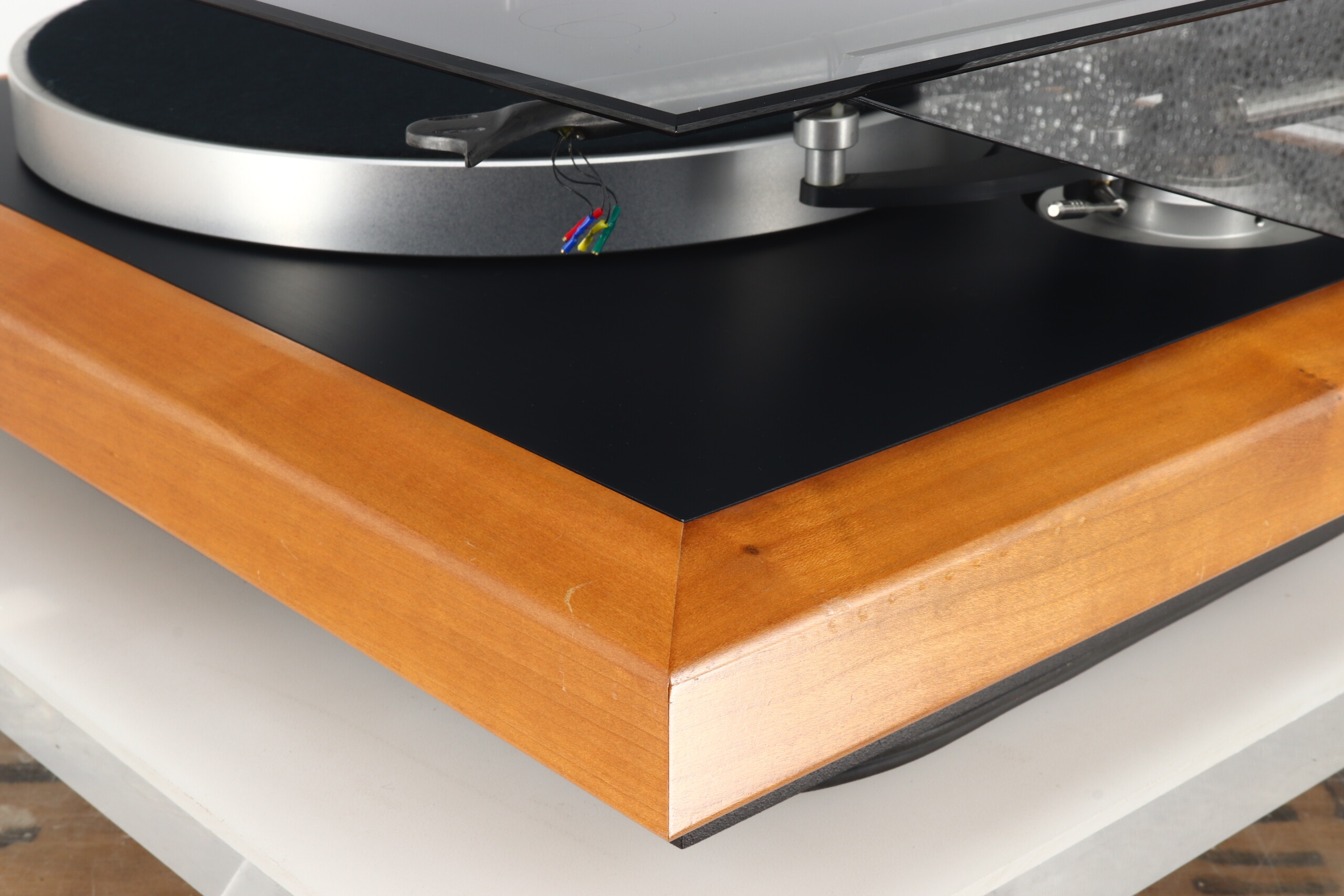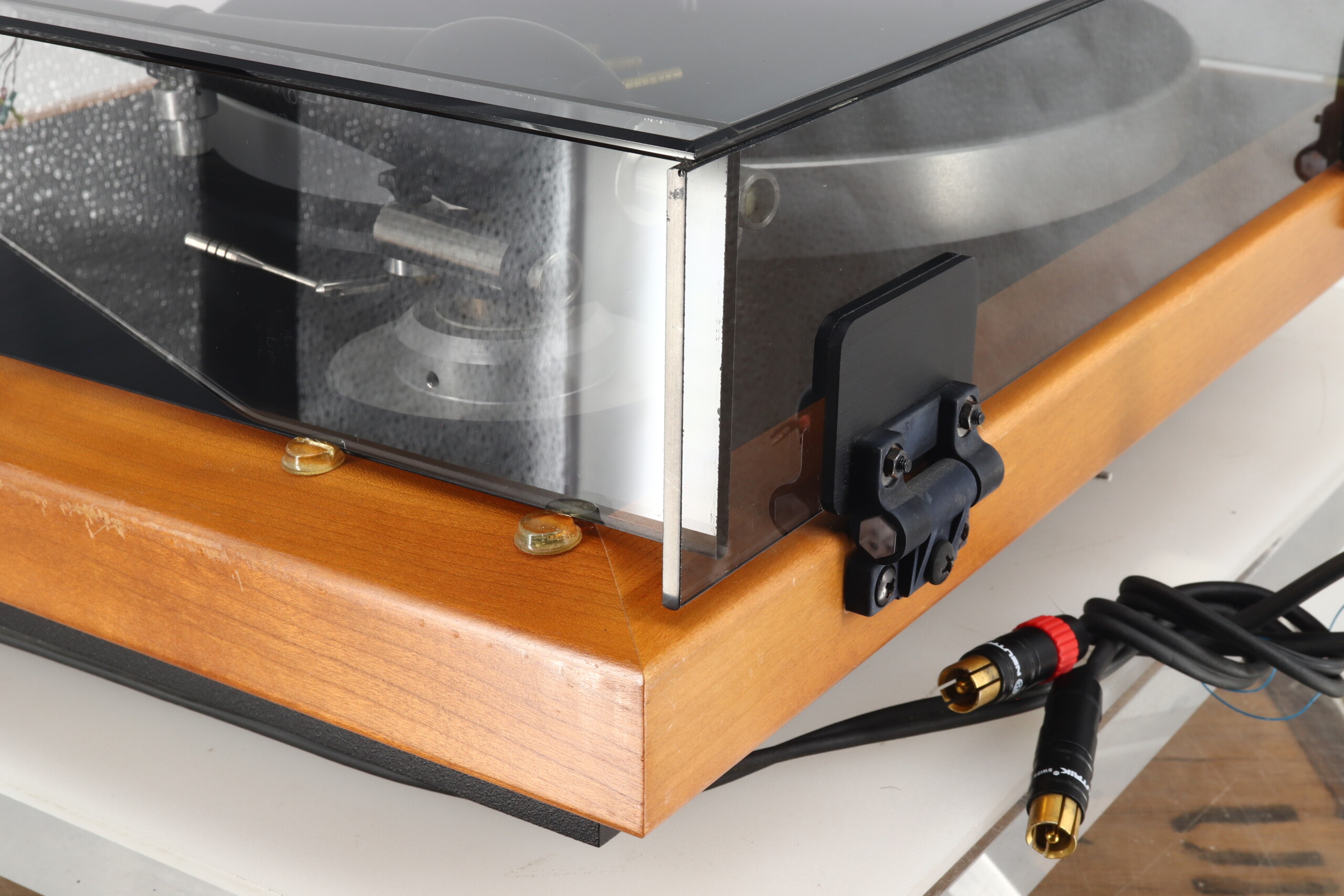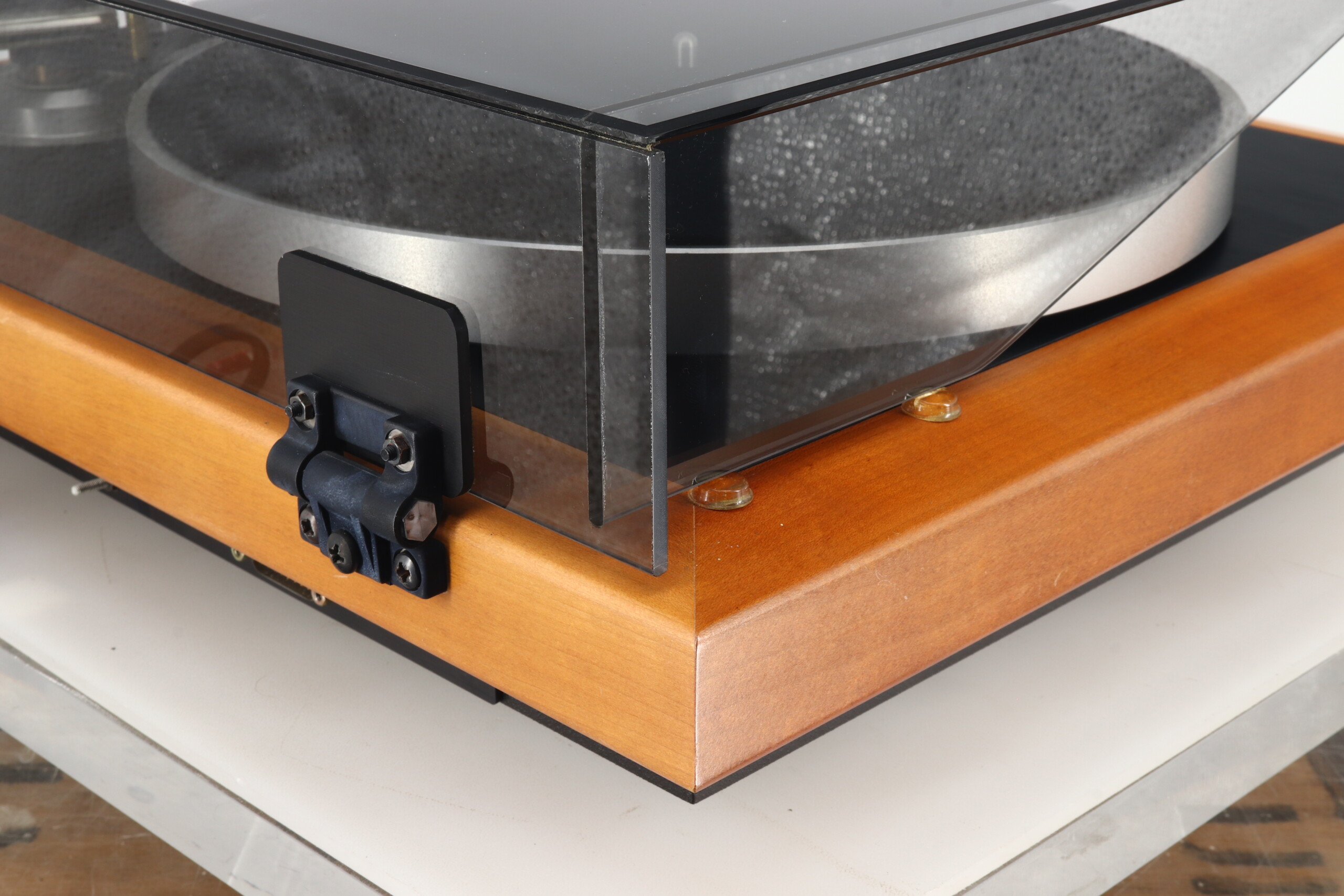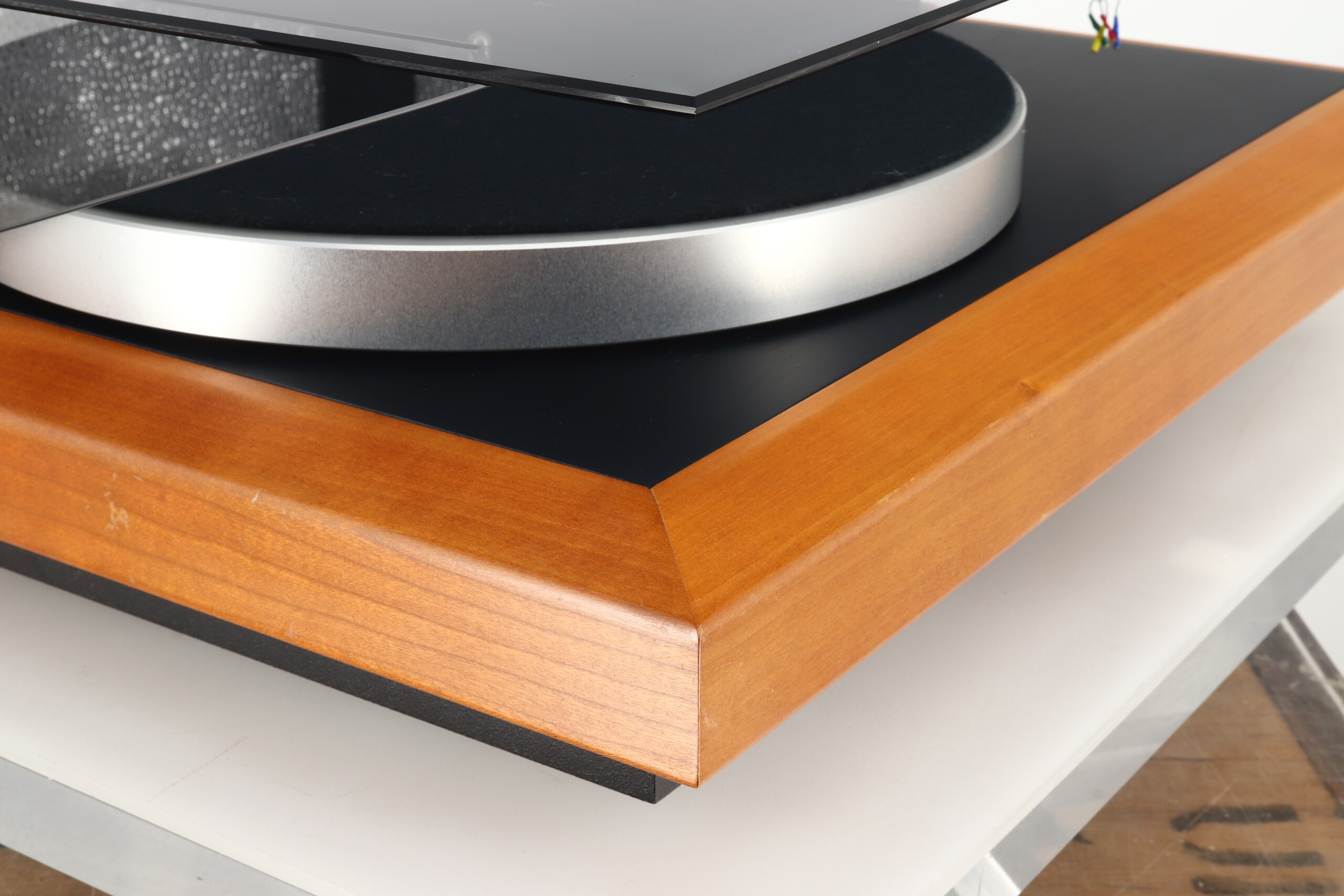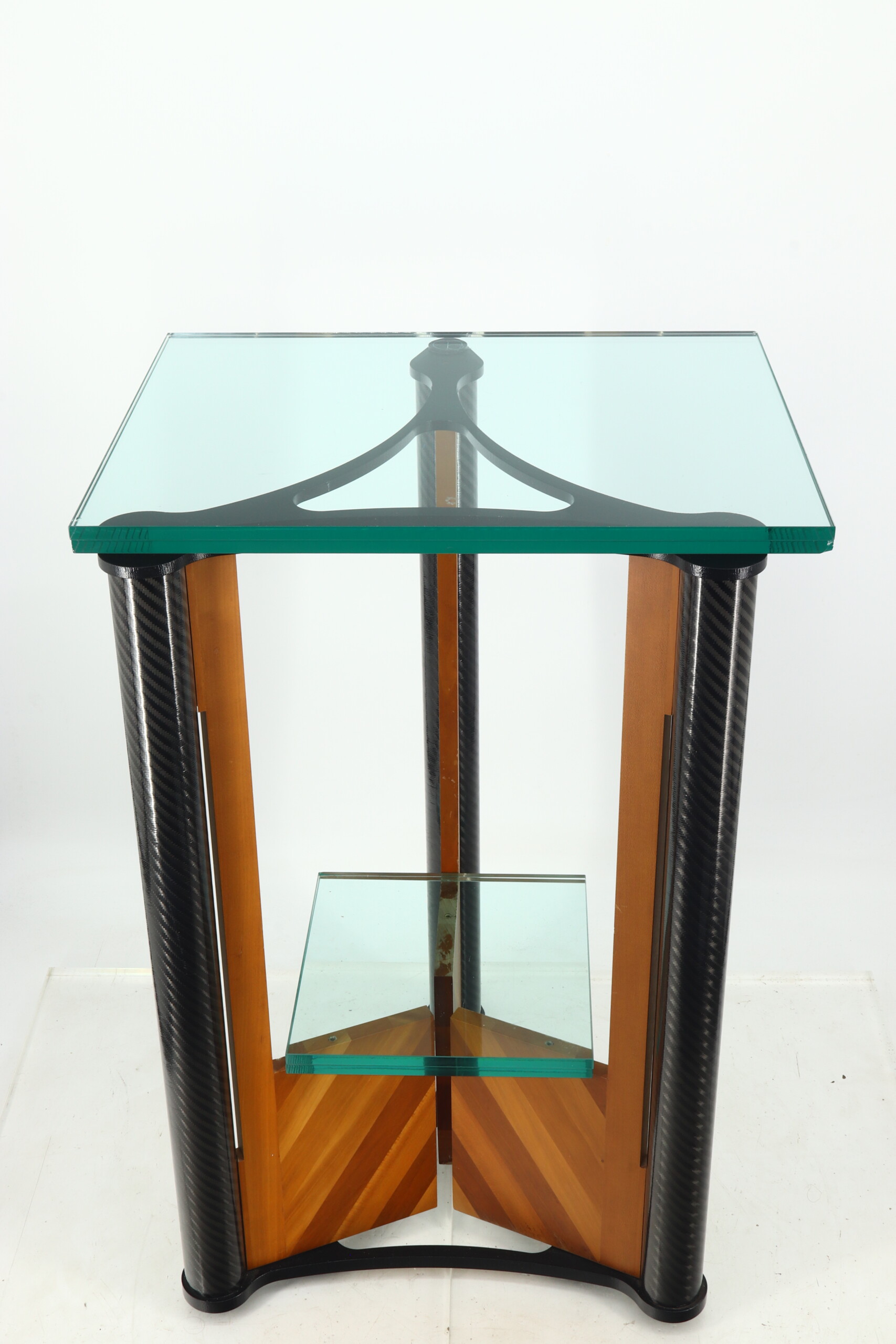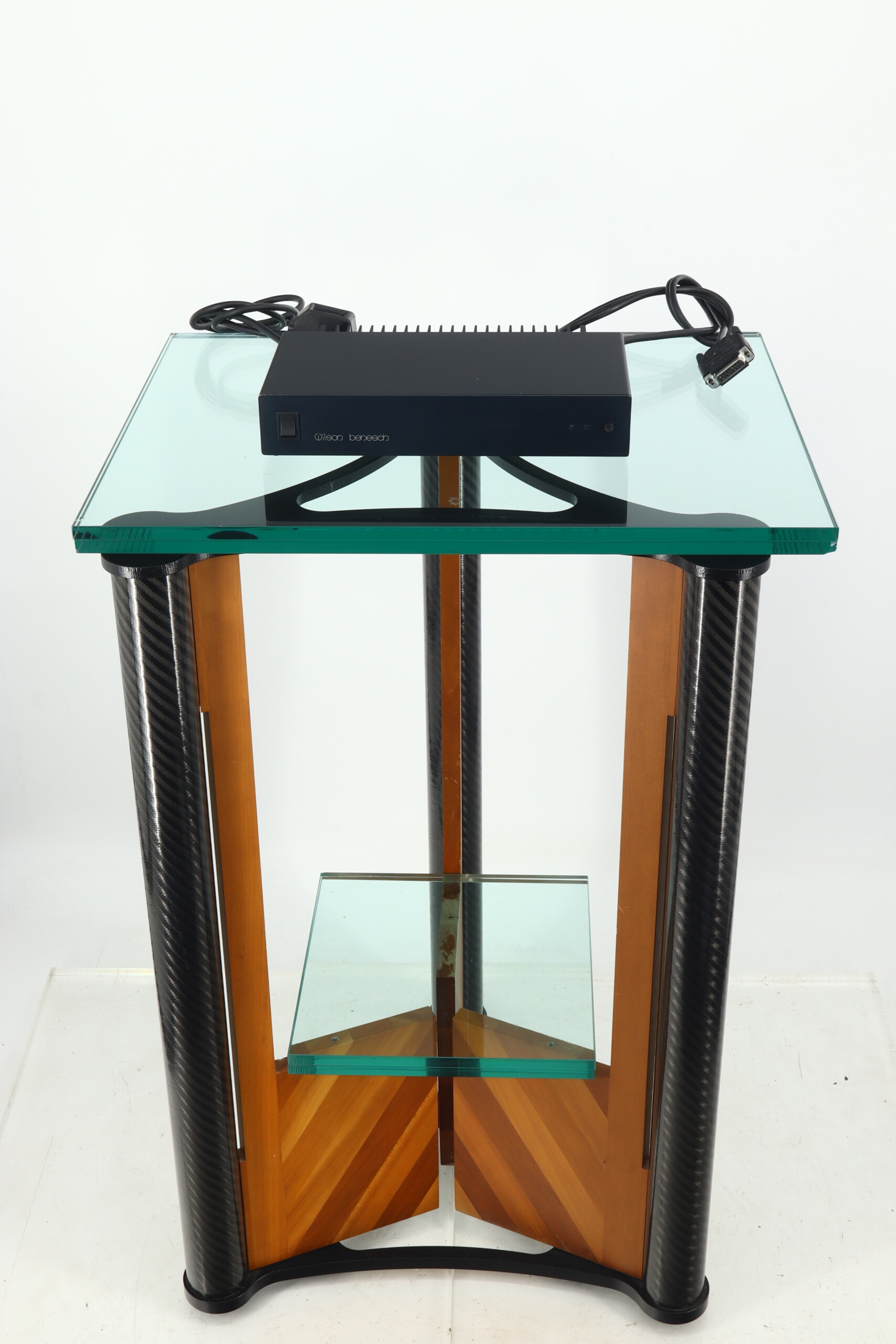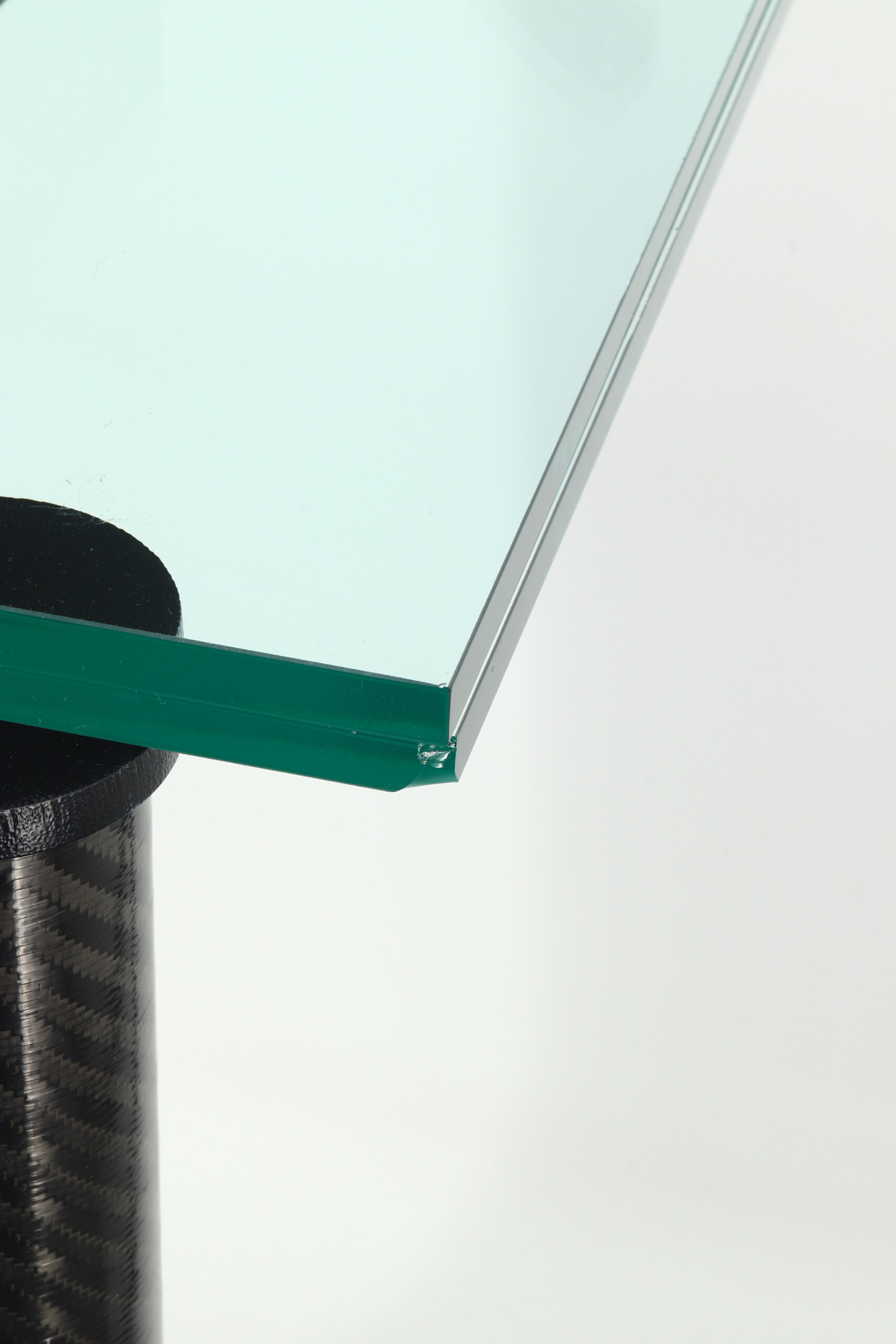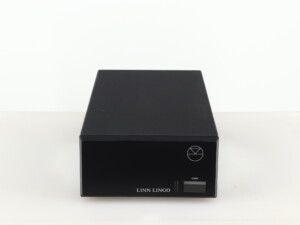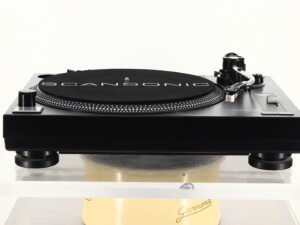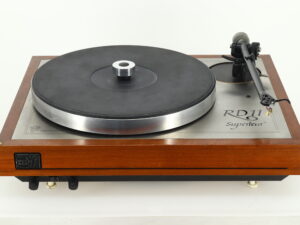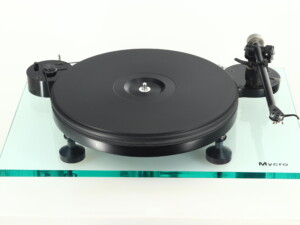Your basket is currently empty!
Wilson Benesch ACT Turntable / ACT 2 Tonearm / Stand
£1,995.00 Inc VAT
Manufacturer : Wilson Benesch
Model : ACT / ACT 2 W/ Floorstand
Serial Number : B13 CR02
Packaging : N/A
Accessories Included : PSU
Price When New :
1 in stock
Description
Here we have a rather rare turntable from Sheffield based company Wilson Benesch. Originally set up in the “Steel City” in 1989 this was their first product to reach the market and caused quite a stir at the time. Our example is fitted with the companies own tonearm the A.C.T. Two, has its power supply/speed control unit, and to complete the package we also have the dedicated and rather substantial stand unit. All items are in good fully working condition noting a few minor blemishes and general signs of age – please refer to photographs. They will be professionally packaged and come with our regular three month warranty. The only thing not supplied is a cartridge and we would be more than happy to help supply one if required.
Wilson Benesch Said….
The Wilson Benesch Turntable and the A.C.T. One tonearm were products like no other. The designs had a number of innovative features that governed exceptional performance and placed the turntable and its tonearm in a class of reference products for their time. However the advanced material technology at the heart of the design truly differentiated the product from the competition.
The design made waves within the audio fraternity, initially due to the unique design concepts and the use of advanced materials technologies that had seldom been seen in the High End Audio industry before.
The Wilson Benesch Turntable featured an advanced composite sub-chassis built from a Nomex core with a carbon fibre skin. It was the first carbon fibre component ever to be used in a turntable design. Whilst the concept of carbon fibre and its unique stiffness / damping properties might be commonly understood today, it is important to remember that this was 25-years ago and the year was 1989. Carbon fibre was very much the preserve of the aerospace industry and commercial products that incorporated this material were almost none-existent.
The Wilson Benesch Turntable also featured a novel sprung suspension for the external rotor Papst Hysteresis motor system. As well as isolating motor noise from the deck the springs also placed the geometry of the spherical pulley at the centre of the motors movement. This clever design essentially nullified any vibrational energy transfer from the pulley to the belt. The Papst motor was a phenomenal component, and when the supply of this fundamental component ceased it effectively ended Wilson Benesch’s production of the Wilson Benesch Turntable forever.
From the earliest developments and feasibility studies, research showed that hybrid construction and composites could provide real world improvements in performance over single material solutions. The platter in the Wilson Benesch Turntable contradicted the high mass designs that were common place and took the form of a high precision hybrid construction based around a lossy polymer and a precision mated alloy component.
The fully sprung A.C.T. Sub Chassis was completely isolated by a fully adjustable sprung suspension that was also stabilised laterally by a Kevlar / Spring tie.
The motor power supply was both elegant and precise. Each phase was capable of being trimmed. Speed was fully adjustable incorporating a graduated startup and speed change so that the belt was never stressed or stretched.
Following a very successful launch the Wilson Benesch Turntable rapidly gained favour across the world and exceeded all expectations. It won countless awards globally. But it was the success in the key markets of Japan and Germany that solidified Wilson Benesch’s status as a new player in the British High End Audio market.
The A.C.T. Two Tonearm
In the award winning ACT Two, Advanced Composite Technology is used to create the lightest, stiffest, most highly damped tube on the market that is almost 15% lower in mass than the ACT 0.5. The ACT Two provides all the technically proven virtues of the ACT 0.5 but in a more refined package.
The ACT Two is further testimony to our single minded commitment to the analogue medium and is a worthy addition to the Wilson Benesch product range.
Wilson Benesch Ltd was the first company in the world to produce a fully moulded, single component arm tube. Torsionally, it is typically ten times stiffer than conventional arm tubes. It is three times stiffer in bending and an order of magnitude better at damping audio frequencies. Carbon fibre is unquestionably ideal for this function. The structure is formed from two contra rotating helixes of pure carbon fibre, much the same as some of the most effective natural structures which have benefited from millions of years of design refinements.
The shape of the beam is also quite natural as it has been determined precisely by its function and physical limits,
rather than by the crudities of a manufacturing process as in the case of metals or ceramics. As a result, material use is exact and exists only where it is required. It should be noted that this is quite different from the mass produced straight carbon fibre tubes being used in other designs.
The performance of the carbon beam is matched by the equally effective and equally unique Kinematic bearing. The combined function of the bearing and counterbalance provides the ideal mechanism for a tonearm movement. The benefits of this technology for the end user are significant. All aspects of reproduction are improved as the cartridge is provided with the opportunity for the first time to do its job without being heavily influenced by the function of the system designed to support it.
The bearing system of the ACT 0.5 and ACT Two tonearms is unique, although its operation is derived from a long established engineering principle, namely Kinematic location. Basically, the theory of Kinematics states that there are just six types of motion that a body can experience. Movement in the three axis of our three dimensional world and rotation in each of these axes. These motions are known as the six degrees of freedom. To fix a body in space one must prevent movement in each of these.
The kinematic bearing system allows just two degrees of freedom, rotation about one axis to track the record and rotation about a second axis, to allow for any vertical movement of the cartridge. All linear motions are completely eliminated, thus giving the cartridge a super stable reference from which to carry out its task as a measuring instrument. Indeed the classic application of Kinematics is in the design of high precision laboratory measuring equipment.
The bearing is stabilised by the low-slung counterbalance beams that eliminate radial movements of the tube. The simple design also permits fine adjustments of azimuth. A single point of contact between the counterbalance and beam is provided by four carbon chrome balls, thereby, avoiding troublesome resonance from a compliant type of mounting. The whole system is simple and reliable; there is no need for adjustment; it is unaffected by temperature change; pre-loading is no longer a concern; damping is catered for; the whole component functions without any noise. It will perform as well in thirty years’ time as it does today! It is important to note that neither a ball-race nor a unipivot can claim to satisfy the requirements of Kinematic location or indeed the other advantages incorporated into this deceptively simple solution.
Specifications:
Effective Mass: 9 g
Overhang: 18 mm
Effective Length: 235 mm
Mounting Distance: 217 mm (spindle to pillar)
Weight: 340 g
Cartridge Range: 5 g – 16 g (assuming a max required tracking force of 2 g)
Internal Wire: Silk Covered Litz Wire
External Wire: Star Quad 4 * 96 * 0.05 Resseun Shield. Core to Core 70 pf Resistance 0.108 Ohms. Termination: Gold plated RCA Phono Plugs
Reviews
The Wilson Benesch Turntable and A.C.T. One Tonearm won ‘Reference’ in Stereoplay in 1994 and 1995. In 1996 it won Stereoplay’s ‘Golden HIFI Award’ and ‘Best of Test Award’. Incidentally, 1996 was the same year that the A.C.T. One Loudspeaker took ‘Reference’ at Stereoplay. But it had been the success of the Wilson Benesch Turntable that fuelled the development of the A.C.T. One Loudspeaker.

